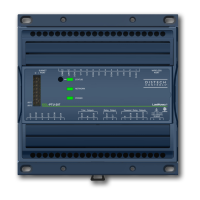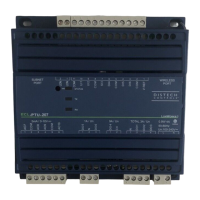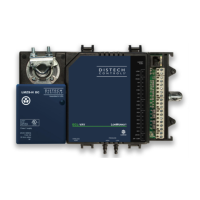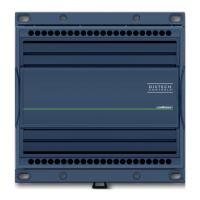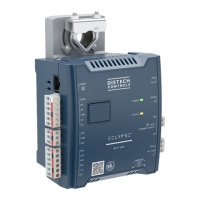130 Network Guide
Table 42: EIA-485 Signal Specifications
The receiver is also protected against the temporary application of 24VAC and against tran-
sients. However, such events will interrupt data reception.
Common Mode Noise Rejection
Noise induced onto the conductors of the data bus cable will be common to both Net + and
Net - data bus wires - that is to say, the noise will be of the same amplitude and polarity as the
conductors in the cable are so close together. For this reason the EIA-485 data bus is differen-
tial data bus. The receiver nulls out common mode induced noise picked up on the data bus
wire by subtracting the negative input from the positive input. This greatly reduces the impact
that induced noise has on the data bus.
Figure 74: Common-Mode Noise is Significantly Attenuated by a Differential EIA-485 Line Receiver
Parameter Conditions Min Max Units
Differential Driver Output Voltage
- Open Circuit
6V
Driver Output Voltage - Loaded R
LOAD = 27Ω 1.5 5 V
-1.5 -5 V
Driver Common Mode (CM) Volt-
age
R
LOAD = 54Ω -1 3 V
Receiver Sensitivity -7 ≤ Vcm ≤ +12 ±0.2 V
Receiver Common-Mode Voltage
Range
-7 +12 V
Receiver Input Resistance 96K Ω
Typical EIA-485 line
receiver with inverting
input shown
Induced common-mode noise transient
Noise transient
attenuation
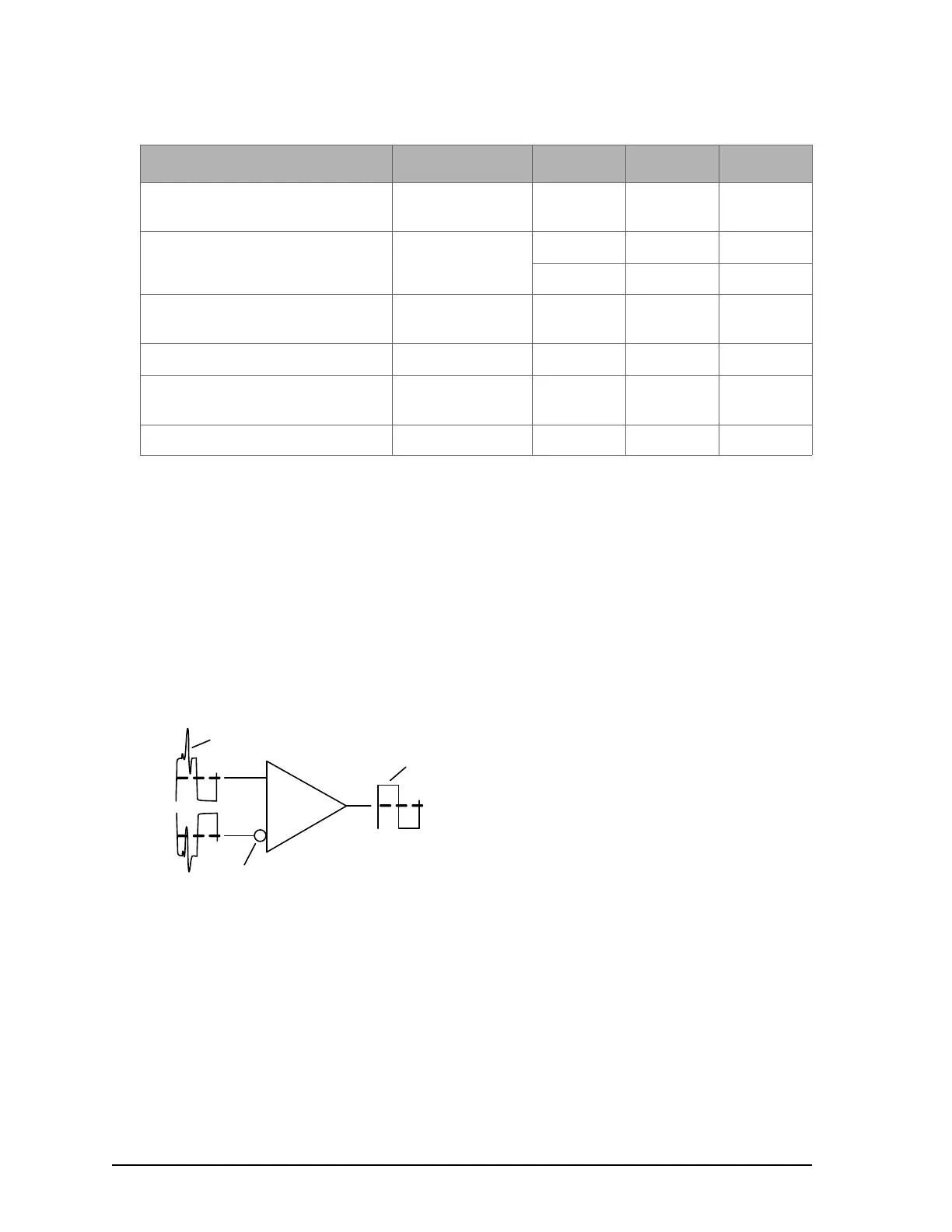